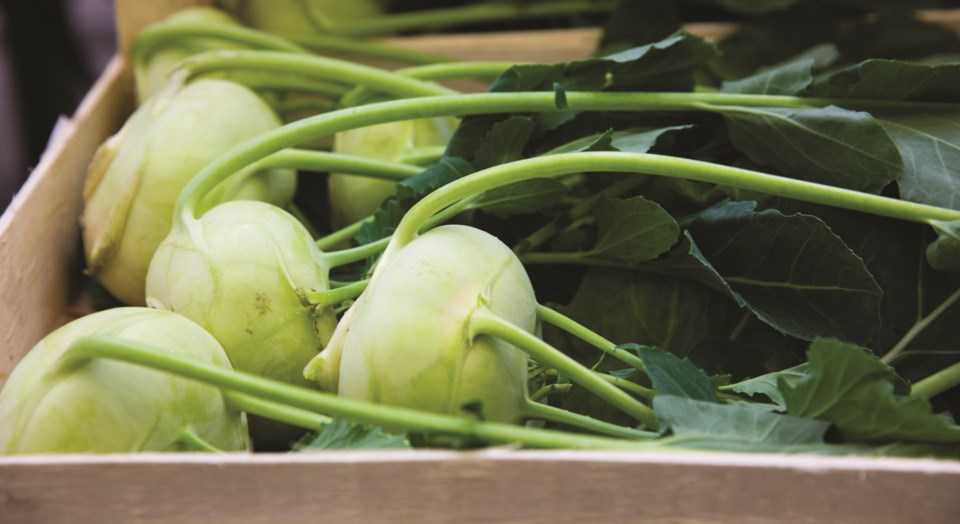Labour Day always draws an unequivocal line in the sand of life. On one side, summer and fun. On the other, fall and all the fallout it entails: Kids and adults alike scrambling with backpacks for school or work stuffed with the right lunches—and the right masks. A bit of melancholy as the evening sky darkens earlier and earlier, and the first sparks of red dot the trees.
But what can you do? Keep things easy to keep your cool, I say, so here’s a round-up of carefree ways to eat simply throughout the day that won’t tax your health or your brain. And you don’t have to be in school or uni, or have kids, to enjoy them.
If it makes you feel better, keep in mind things could be worse, way worse. Labour Day started back in 1885 in the U.S. and 1895 in Canada as a way to celebrate workers and promote justice and safety for them—including the eight-hour work day and five-day work week. Before that you would have needed a lot more than a bagged lunch to get you through working at least 10 hours a day every day of the week—even if you didn’t need to wear a mask.
SPACED-OUT FOOD THAT’S GOOD FOR YOU
No, it’s not from Vulcan, or Niburu. Still, kohlrabi, the amazing but usually overlooked veggie, sure looks like a mini-satellite or Sputnik, or some weird life form from Star Trek with its big bulb, pearly-green skin and strange little radiating spokes (those are the bases of stems that supported the leaves before they were cut off).
But kohlrabi comes from your favourite local farm or produce department, and delivers one of the tastiest, easiest servings of fibre and nutrition that will lighten the tedium of the usual (yawn) carrot sticks and apple wedges in the old lunch pack.
The bulb of the kohlrabi is actually the engorged stem of the plant. It grows above ground, atop the tap root, which looks like a skinny parsnip. If you cut into the peel at the base of the bulb and pull upwards toward the top, it comes away easily.
Kohlrabi is a cultivar of wild cabbage, so like its cousins kale, broccoli and the like, it’s super good for you. One cup raw only has 36 calories, but it contains two grams of protein and five grams of fibre plus it’s an excellent source of magnesium, phosphorus, calcium, iron, vitamin C and more.
Bit of a head’s up, you might have a bit of challenge finding it this year, but it’s worth it. Whistler’s Nesters Market usually brings it in from Pemberton, but supply can be spotty. Likewise Whistler’s Creekside Market usually has kohlrabi, but do check. And if you shop up at Pemberton Valley Supermarket, Amanda will be bringing it in for sure with the other fall veggies like rutabaga.
As for those Star Trek planets, it’s possible to grow kohlrabi on Vulcan. But it might be tough on Niburu. With the cooler, redder star that it orbits, your kohlrabi would have to adapt by being red or black in colour to gather as much light as possible for photosynthesis.
DON’T WORRY, BE HAPPY… PACK A BANANA
It’s proven! Bananas really do make you happy and, man, do I eat a lot of them lately. Never mind their cheerful yellow and the fact they’re shaped like a smile, bananas really do help you relax, sleep better and crank down those anxiety levels. They even help you concentrate.
Bananas have high levels of potassium and magnesium—both good muscle relaxants—as well as the amino acid L-tryptophan, which is converted to a molecule, which our bodies use to produce serotonin, sometimes called the “feel-good” chemical, and melatonin. Your body needs both of these to regulate sleep, cognition, mood, even behaviour.
Some experts also cite bananas for their ability to enhance concentration, and to help students learn. They contain tryptophan, which may help preserve memory function, and vitamin B6, which helps memory function, too. Salmon, potatoes and tofu are good sources of B6 as well.
For a quick and easy happy dessert or snack, mash up a banana until it’s really mushy, and add a dollop of plain, non-sweetened yogurt. Mix well and Bob’s your uncle. Add nuts, unsweetened coconut, or a few chocolate chips as you like. Makes enough for two, so adjust proportions as needed.
THE PERFECT ANCIENT SNACK
If ever there was a single easy food I could live on a desert island, it would be hummus, houmous, hommos—or however you like to spell it.
A desert island, or actual desert, would be totally appropriate, since this tasty, healthy snack likely came out of ancient Egypt. (It’s recorded history goes back to the 13th century but it’s much older than that.)
There are so many recipes online, and otherwise, for hummus I won’t try to give you one. My old pal Katie Rodgers uses the one in Joy of Cooking—simple, probably like the original recipe, with just tahini, lemon, garlic and salt. I’ve been monkeying around, boiling my chickpeas with a pinch of baking soda in the water that makes them so soft and creamy it’s sinful. They’re also easy to mash with the other ingredients with just a potato masher. Who had a food processor in ancient Egypt?
Whether you make it or buy it ready-made, your super-hummus is packed with plant-based protein and tons of good-for-you minerals like iron, folate and manganese. Enjoy it anytime.
Glenda Bartosh is an award-winning journalist who’s happily made supper from kohlrabi, hummus and banana pudding.




